
The decision to pursue conservation biology came after an incredible and intense 14 months of traveling through South America. There was no one moment or epiphany, no strike of clarity, just a slow and steady increase in awareness that I needed to work with the environment. The Andes, the Amazon, the deserts, the salt flats, the coasts, they were all too extraordinary to be mere tourist attractions and certainly too important to be under threat.
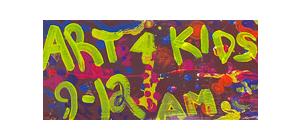
The program I enrolled in had three main tracts: science-based, policy-based and education-based. Science was cataloguing and detailing all the problems; it was surveying the earth and distilling the interactions between animals and their ecosystems that were causing biodiversity loss. Of these, habitat fragmentation, invasive species, over exploitation, over population and climate change consistently rate as the most devastating. Policy, in theory, uses this information as basis for efforts in governing our interactions with the environment, for example, by implementing national parks, pollution taxes, and biological trading restrictions. Finally, education efforts focus their energy on how to teach students the science and understanding of the issues we face today.
As I had studied psychology and philosophy as an undergraduate, I decided to take post-baccalaureate courses in evolution, environmental biology and conservation biology to help me apply my knowledge. Perhaps there was an element of being back in an intellectual setting after three years that contributed to my excitement at the time, but I loved the classes I was taking and was eager to start a program. However, when I applied and was accepted to an MA program in New York City, I was overcome by a huge wave of uncertainty. At first, I chalked it up to commitment phobias and being daunted by the work load that lay ahead; but well into the second semester, I was still feeling (perhaps even more strongly) this great uncertainty about what I was doing.
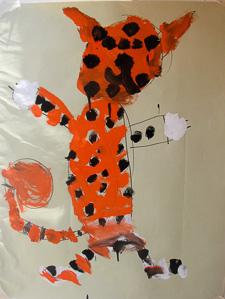
It took me a good few months of struggling with this uncertainty before I realized what was truly bothering me. None of the tracts addressed the issues I thought were at the root of today’s environmental challenges. They all seemed to propose Band-Aid solutions to wound with much deeper causes. It seemed evident that no matter how many studies we did and no matter how many parks we created, modern environmental issues would continue to persist so long as we didn’t address what was behind the human behaviors that led to those issues in the first place. Why do humans fragment habitats, spread species, exploit resources and over populate? What perceptions and concepts do we have of the environment that lay at the foundation of our beliefs and behaviors?
Indeed, it was perplexing to me that a program in conservation biology, a field founded on the charge of conserving biodiversity and inherently interdisciplinary in nature, would not have been structured to address these questions. My program, however, was not special in this regard. Although conservation biology flaunts a multi-disciplinary intersection of the humanities and hard sciences, historically it has actually been dominated by hard science topics such as vertebrates, forests, landscapes, and single species, while showing a distinct dearth in interdisciplinary studies (Fazey et al. 2005).
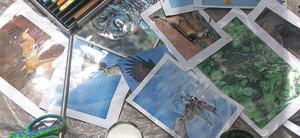
Whilst dragging my feet academically, and perhaps in reaction to the heavily science-based program, I started rediscovering my love of art. I began taking drawing and painting classes and started doing performance art. I took welding courses, began doing carpentry and started assisting a sculptor in Brooklyn. I even turned my apartment into a gallery filled with the work of friends and other artists and opened it to the public for a month. Very quickly I began living almost two separate lives: a very academic and insular one and a very hands-on and extroverted one. These two aspects, in theory, could have worked to balance each other; however, they made me feel even more torn. I had one foot in the door of science and the other in the door of art, one pushing me to ignore my feelings and the other listening only to my feelings. Indeed, far from feeling balanced, I felt of two minds. It was a very tumultuous and difficult period, and I struggled with these seemingly opposing interests for some time.
Not until a year into my program did I realized the only way I could move forward and still remain engaged in my degree (and not loose my mind!) was by combining the two. I was lucky enough to have an advisor who genuinely understood and felt my struggle and who was open enough to allow me the academic space and support to pursue this intersection fully.
My interest in art’s role in conservation biology stemmed from my initial issues with the programs composition: Although the discipline of conservation biology claims to be an interdisciplinary field, it is mainly based within the hard sciences. So many of the problems we face today, however, are caused by our day-to-day interactions, which in turn are caused by the perceptions we have of our environment and by how we understand our relationship to nature. Art, it seemed, had the ability to play a great role, not only in raising awareness about the environment but also in challenging our current views and concepts of nature.
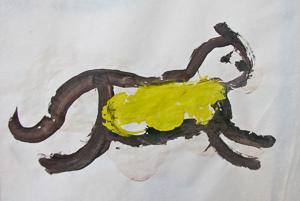
However, it soon became clear that this collaboration, as wonderful as it sounded on paper, often did not amount to the accolade it promised. Although there are certainly a number of passionate and insightful studies addressing these connections, art-science projects are frequently dismissed as not being artsy enough for the art community or science-y enough for the science community, in the end falling upon the eyes and ears of a very small subsection of people already interested in what these studies have to say.
My research into the connections between art and conservation helps me advise artists interested in environmental issues to allow these challenges to influence their art, rather than guide it, and equally to urge scientists not to compromise their methodologies in an effort to be more artsy; but these ideas are still extremely young and nascent. Far from negating art’s role in the conservationist’s plight, I believe my research highlights the notion that conservation biology is and needs to be a truly interdisciplinary field. How we envision the future of conservation biology will alter the number and type of people willing to contribute and engage with our environmental issues. The urgency required in our efforts and the ubiquity of threat across cultures and land is so vast that conservation biology would only profit from expanding its boundaries to include more seriously the humanities and the arts. It need not be a sub-discipline of biology, as it is often envisioned, but rather a discipline of its own accord.
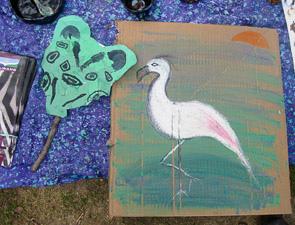
Science and academic journals focused on conservation can also begin to include essays, intervention proposals and research papers written by artists engaged with biodiversity loss. This will bring different views and thought processes into heretofore heavily hard-science dominated settings, offering different perspectives from which to address the goals of conservation. Articles written by artists and by ecologists should be side by side in publications proponing to represent the state of modern environmentalism and natural resource management. Integrating art into conservation biology journals will familiarize artists and scientists with each other’s works, facilitating a more effortless progression of exchange.
Far from diluting the thrust of conservation biology, these simple actions will instead extend its reach, amplifying its influence and offering greater potential to create lasting change. Indeed, it behooves the conservation biology community to welcome artists whole-heartedly and openly into their field of study, for the more disciplines conservation biology embraces, the stronger a force it will become. Why should the fight for biodiversity take place on a limited platform when so many other spheres of influence are available and willing to contribute? Is not the widening of their reach proportional to the efficacy of their actions?
Fazey, I., J. Fischer, and D. B. Lindenmayer. “What Do Conservation Biologists Publish?” Biological Conservation124, no. 1 (2005): 63-73.
Meine, C., and M. SoulÈ. “” A Mission-Driven Discipline”: The Growth of Conservation Biology.” Conservation Biology 20, no. 3 (2006): 631-51.
Roberge, Jean-Michel, Grzegorz Mikusinski, and Hugh P. Possingham. “Has the term” conservation biology” had its day?.” Frontiers in Ecology and the Environment 8, no. 3 (2010): 121-121.
Soule, M. E. “What Is Conservation Biology?” BioScience (1985): 727-34.